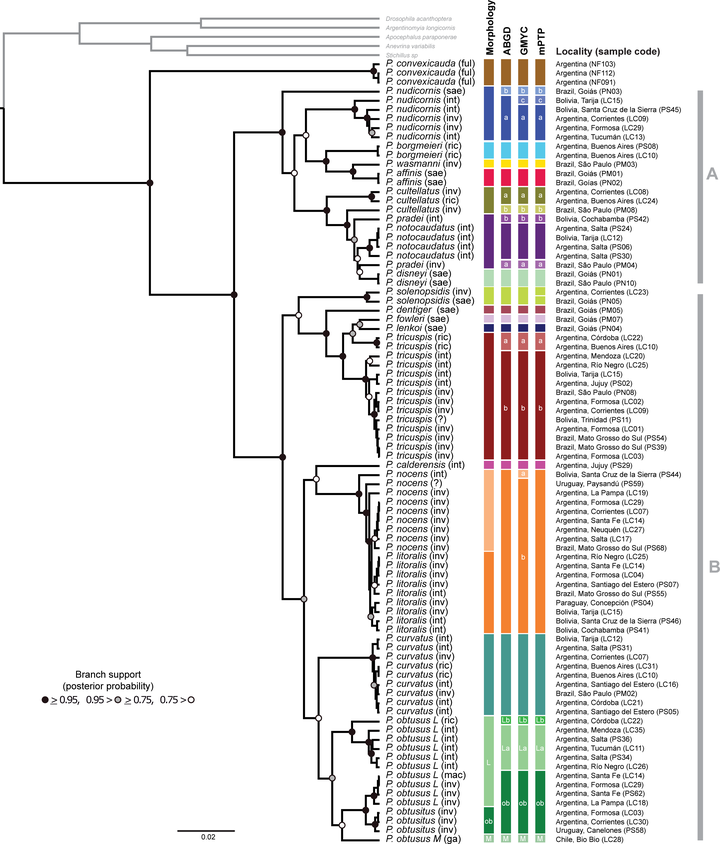A Species delimitation approach to uncover cryptic species in the South American fire ant decapitating flies (Diptera: Phoridae: _Pseudacteon_)

Abstract
South American fire ant decapitating flies in the genus Pseudacteon (Diptera Phoridae) are potential biocontrol agents of the invasive fire ants Solenopsis invicta and S. richteri in the United States and other regions of the world due to their high host specificity and the direct and indirect damage to their host ants. Despite their importance and the fact that several flies have already been released in the US, little is known about the genetic variability and phylogenetic relationships of Pseudacteon flies parasitizing South American fire ants in the Solenopsis saevissima species-group. A species delimitation analysis was conducted using a distance-based method (ABGD) and two tree-based methods (GMYC and mPTP) using COI sequences of 103 specimens belonging to 20 of the 22 Pseudacteon species known from southern South America. Additionally, phylogenetic relationships between the already described and new candidate species were inferred using mitochondrial (COI) and nuclear (wingless) sequences. The species delimitation analysis suggests that species richness in these flies has been previously underestimated, due to the existence of putative cryptic species within nominal Pseudacteon obtusus, P. pradei, P. tricuspis, P. cultellatus, and P. nudicornis. Geographic distribution and host fire ant species seem to support cryptic lineages, though additional morphological data are needed to corroborate these results. All phylogenetic analyses reveal that South American fire ant decapitating flies are grouped into two main clades, with Pseudacteon convexicauda sister and well differentiated relative to these clades. Neither host nor geographic association appeared to be related to the differentiation of these two main clades within South American fire ant decapitating flies. This work provides information that will allow testing whether the putative cryptic phorid fly species show differences in their effectiveness as biocontrol agents against the highly invasive imported fire ants.